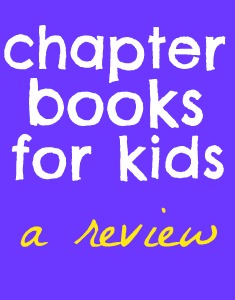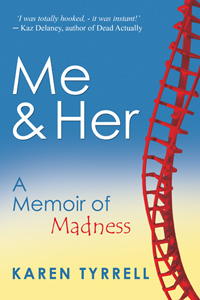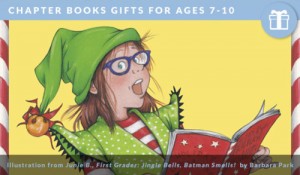 WOOT! Today I commenced my new children’s Chapter Book after weeks of brainstorming, mind-mapping, researching and plotting a story with a strong Mental Health message.
WOOT! Today I commenced my new children’s Chapter Book after weeks of brainstorming, mind-mapping, researching and plotting a story with a strong Mental Health message.
Monday is always the BEST day to start a new project especially when your detailed PLOT beckons you.
Special thanks to Angela Sunde’s children’s writers Facebook group “Monday Writing Sprint” which inspired me to take the plunge. Thanks to all the children’s writers who supported me there.
Today I typed up my first chapter, facing the fear of starting a new project.
Where did I get my story ideas from?
My story ideas sprung from my personal experiences as a primary school teacher who was repeatedly harassed and abused by her student and the parents to the brink of insanity and BEYOND. 
How did I reclaim my life from mental illness and become a full-time author and mental health advocate?
Teachers and children’s writers are now reading my confronting story…
ME & HER: a Memoir of Madness #20 pages for FREE. READ HERE.
I’m passionate about mental health as a pro-active speaker and author for adults and children.
How did I plot my Kids chapter book?
1. Scribbled down ideas in an A3 blank sketch book, starting with a working title in the middle of the page.
2. Researched the main story idea thoroughly via a wide range of resources and media.
3. Brainstormed a premise and powerful themes to support the story.
4. Worked out who would be my main character. What is his problem and fears? Who is his arch enemy? What are their opposing goals and motivations?
 5. Added secondary characters who would add conflict, tension and intrigue.
5. Added secondary characters who would add conflict, tension and intrigue.
6. Listed captivating scenes and places to set my story.
7. Created series of possible brick-wall challenges my main character would encounter and how the problem might be resolved in the end.
8. Envisaged a clear idea of the direction my story would take but allowed my characters to “write” the story for me.
I accept my story will be in a state of flux as new BETTER ideas will supersede old ones.
My Next Step
I’ll write each day, continually adjusting and re-plotting the story as my characters inspire me to.
**NEWSFLASH**NEWSFLASH**NEWSFLASH
Today a psychologist messaged she’s keen to read one of my mental health books I’ve completed to third draft stage. Can hardly wait to hear her feedback. Expert critiques are essential to developing a story that will gel with your reader.
How do you write Your stories?
Are You a plotter or a pantser?… or a bit of both?
Do you agree with my plotting techniques?
What children’s book are You working on?
Great list Karen! I’m a plotter, but I do a lot of exploring while I’m writing, so I’m always prepared to adapt or adjust my outline.
Thanks Charamaine, I used to be a “pantser” but not anymore. Takes too long to realize the structural mistakes you’ve made and then you have to rewrite the damn thing. I’m a plotter for novels now … but will be adapting as I go, like you … Karen 🙂
I’m a plotter these days. My best tip for writers (other than “think and talking is not writing”) is this: “Use logic. Although real life is seldom logical, fiction HAS to be.” I’m working on a YA fantasy and have done the first draft of a new picture book.
By the way, my Writing a Children’s Book Virtual Course is now at a new home on the web. wfcvc.weebly.com is the place to go. $50.00 buys you access to the full course.
Hi Sally, Thanks for coming over here and sharing your wealth of personal tips as a multi-published Author and Editor. Congrats on your new writing projects… Karen 🙂
Congrats Sally on your new online writing course. Sounds brilliant. I’ll check it out soon … Karen 🙂
I plot my stories – but certainly not to the nth degree and it’s not all cut and dried on paper before I pick up the pen to write those first words. Characters and their adventures have a way of taking you off your original charted course sometimes, and you have to be willing and able to accept it. It’s part of the writing journey. Boy, what a journey it can be.
Thanks Sharon for dropping by. YES,I totally agree with you! Its fabulous to plot and structure your story but wonderful to watch the characters invent their own adventures … Karen 🙂
When I write I put my premise or plot down. From there I mind map- yes, it’s still in use. Along with my premise is the main character and from there I create subplots and supporting characters. My story evolves but with changes along the way. Research is a facet but in children’s books the subject can lend itself to life experiences. As a former elementary classroom teacher and K-12 Reading Specialist, I’ve observed reading for enjoyment takes students away from the instructional reading tasks. The story structure must be there but not complicated by facts and adult attitudes.
Congratulations on your new beginnings!
Thanks Carole,
For sharing how you plot your story with mind-maps. YES, I use mind-maps too but forget to mention it. I agree with what you said about research for children’s books. My story WON’T be bogged down with any facts. I’m using my life experience as a teacher and parent to base storyline. My book has a mental health theme so I researched on the psychology of human behaviour: cause and effect. I studied psychology as a major when I studied to be a teacher … Karen 🙂
I used to be a pantser, but discovered it can take you miles off course and take forever to edit. I let the idea sprout into a few flights of fancy and grab the story line that’s structurally strongest. If only get it from that stage to polished product was as easy -LOL
Hi Judi, I agree that using the “pantser” technique can take forever to fix. We must remind ourselves that every rewrite and edit, we’re that much closer to the final polished “version”. Don’t give up now… Karen 🙂